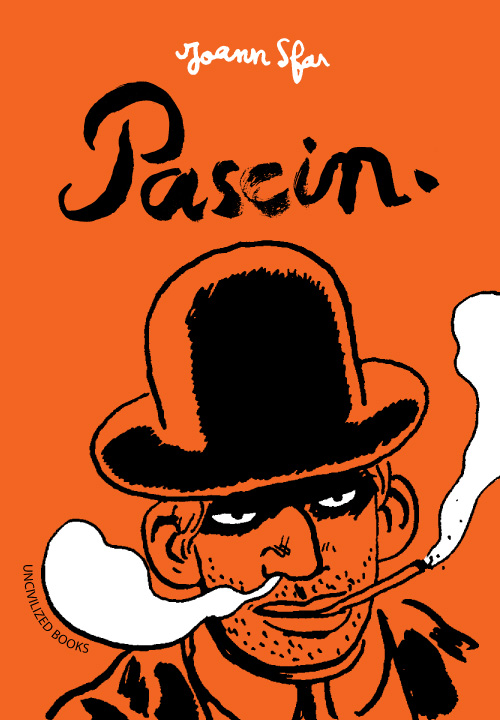
Using comics to explore history is nothing new. Jason Lutes’s acclaimed Berlin explores several overlapping lives in Weimar-era Germany, while Rutu Modan’s The Property examines national trauma and its effect on one family. History and biographical comics can be somber in their tone as in Alan Moore and Eddie Campbell’s From Hell, a hallucinatory take on Jack the Ripper and London in the late nineteenth century. They can also be, as the historical entries in Kate Beaton’s Hark! A Vagrant prove, irreverent, funny, and unpredictable.
A pair of graphic novels showcase the wildly different approaches one can take when turning history into words, pictures, and panels. Joann Sfar’s Pascin as translated by Edward Gauvin is, by nature, biographical, but its tone shifts often from page to page. At its center is Pascin, the name under which painter Julius Mordecai Pincas was known. There are also brief appearances by some of his contemporaries, including Marc Chagall, Claude McKay, and Ernest Hemingway. Rather than a linear approach, Sfar opts to blend timeframes and character interactions. The result can be dizzying and disorienting, leaving the reader with more of an impression of the state of Pascin’s head than of a linear account of his life and times.
The style also shifts frequently: sometimes it’s cartoonish, sometimes it’s more atmospheric, and sometimes it’s almost crude. Sometimes the scenes are structured languorously; others have a more stylized, comic-strip feel. Sometimes Sfar offers brief information about the historical figures contained in the book; at others, he leaves it up to the reader to piece things together.
What emerges from this is a sense of two dueling impulses. The first few pages find Pascin naked from the waist down, talking with onetime lover (and subject of a portrait) Lucy Krohg in a scene that establishes a knowing perspective on both sex and art. But throughout the book, a sense of melancholy also emerges: Pascin’s depression creeps in around the edges, and an essential loneliness manifests itself repeatedly. Pascin himself is an often-contradictory figure, sometimes the striving artist, sometimes a more despicable figure (as when he attempts to seduce a teenage girl). Pascin isn’t likely to leave a reader with one opinion of its subject, but will instead leave the reader with plenty to ponder.
If Pascin represents a more experimental side of comics-as-biography, Democracy represents a large-scale historical epic take on the same. It’s a collaboration between Alecos Papadatos, Abraham Kawa, and Annie Di Donna. Papadatos and Di Donna had previously worked on Logicomix: An Epic Search for Truth.
The story of Democracy is told as a flashback: As Athens prepares for battle against Persian armies, Leander, the story’s narrator, explains how Athenian democracy happened, and his own connections to and observations of it. The creators blend real and fictitious characters in the book, and extensive notes at the end reveal the real-world figures who made it in and which bit players turned out to have huge historical significance in stories not told by this volume.
By and large, Papadatos and Kawa’s storyline does a good job of making the political machinations of different Athenian factions interesting to behold. Leander himself is an earnest enough central figure, shifting between audience surrogate and more active participant. And there’s a good sense of how significant this version of democracy was, even as a childhood friend of Leander’s is present to remind readers that, though Athenian democracy represented a huge step forward, it still wasn’t a perfect system. Speaking of limitations, it’s worth noting the fact that this is a largely male-dominated narrative.
In one of the book’s more interesting touches, Leander periodically receives visitations from Athena, though they’re generally presented in an ambiguous enough style that isn’t entirely clear if these are intrusions of the supernatural or simply hallucinations. And one brief scene featuring gods unbound by time recalls Jo Walton’s novel The Just City, which mashes together history, philosophy, fantasy, and science fiction. In the end, Democracy hits its marks for both entertainment and education. It may not be a work that pushes at the boundaries of the form, but it makes a complex situation both understandable and entertaining, and it adds some nice historical touches along the way.
This was initially published in Signature Reads.
Follow Vol. 1 Brooklyn on Twitter, Facebook, and sign up for our mailing list.
